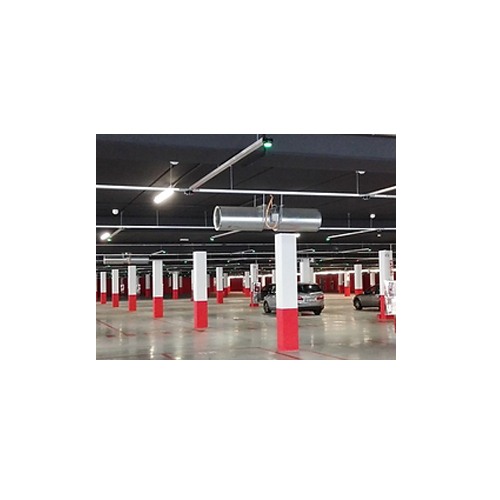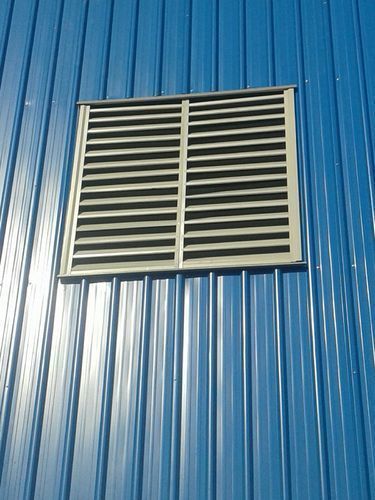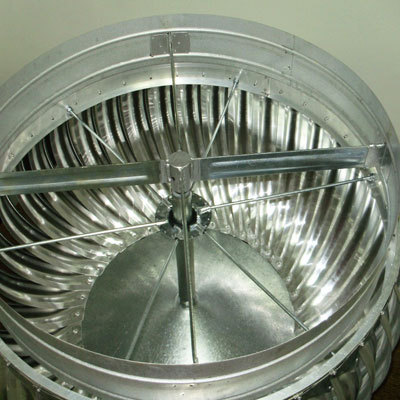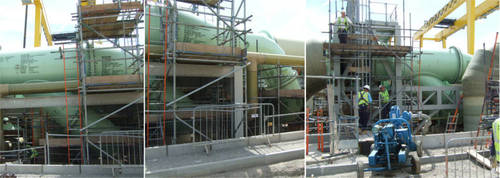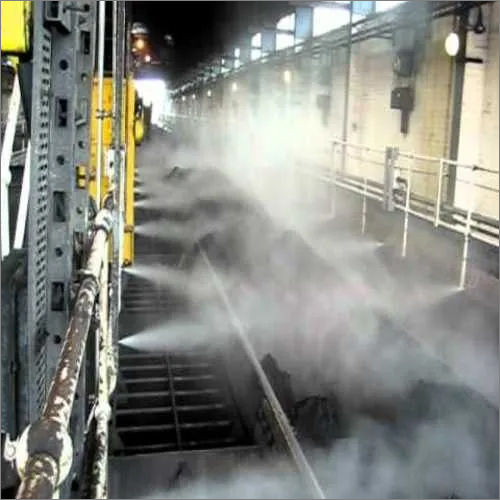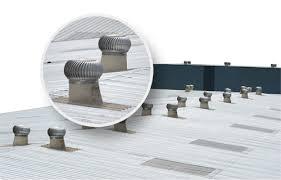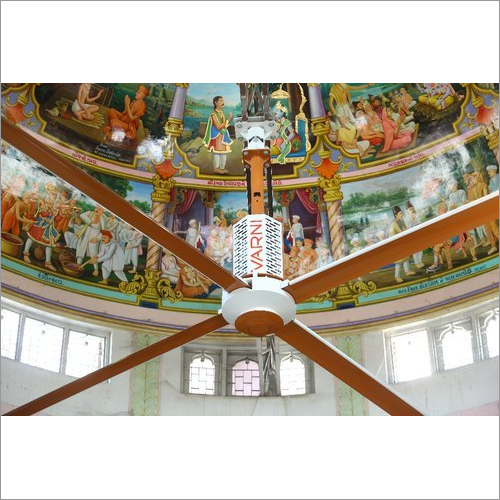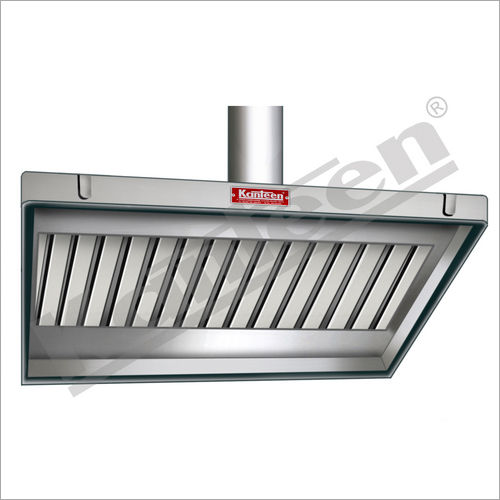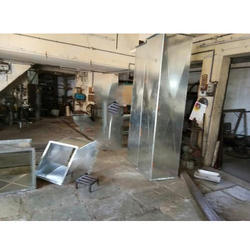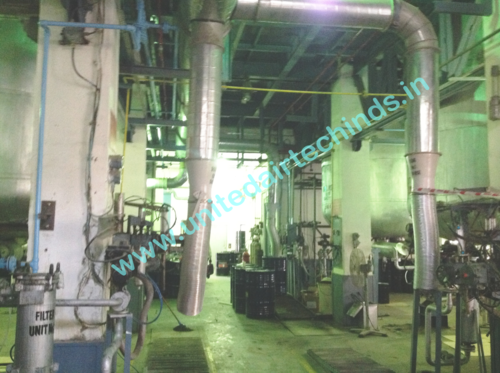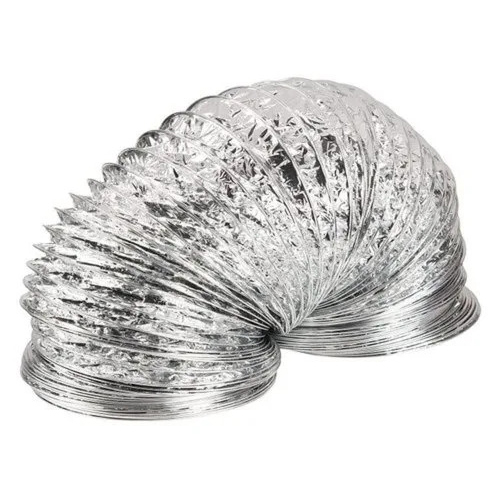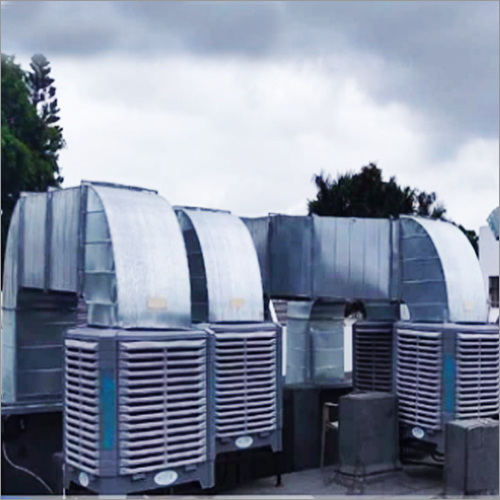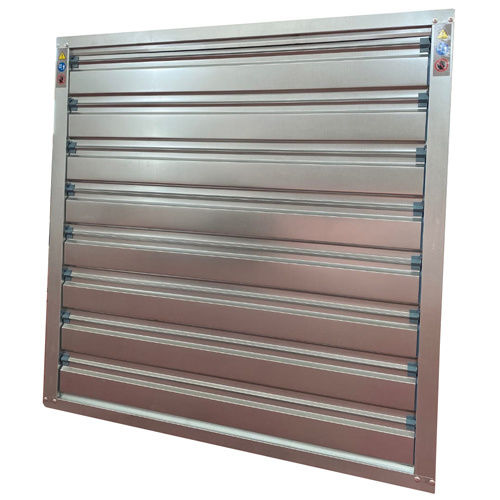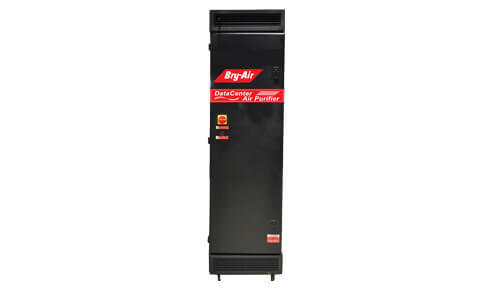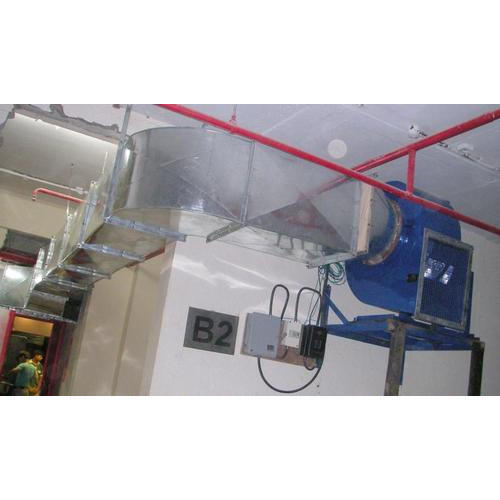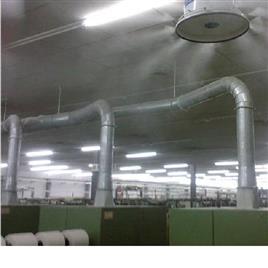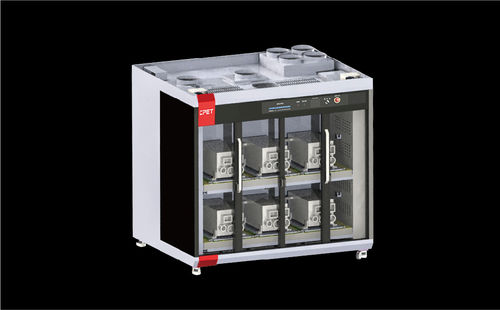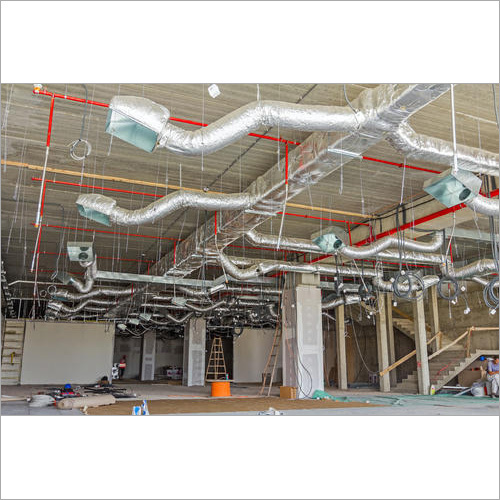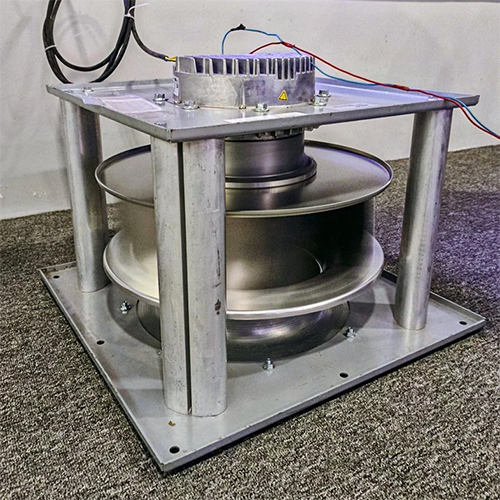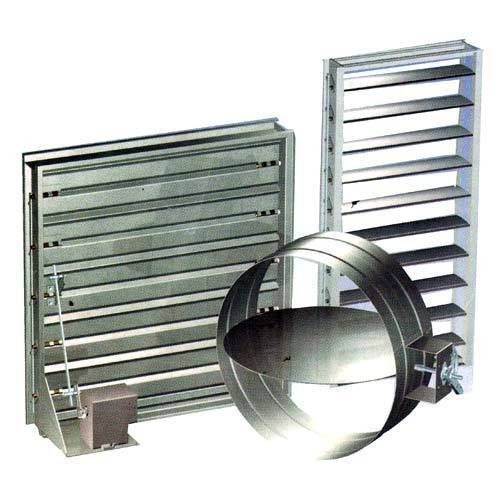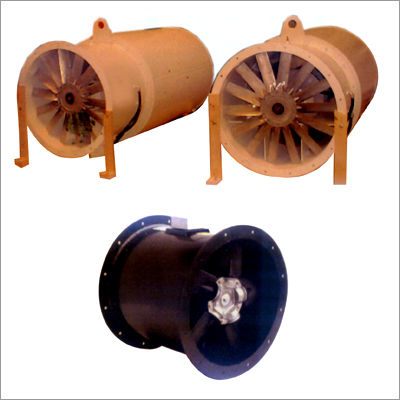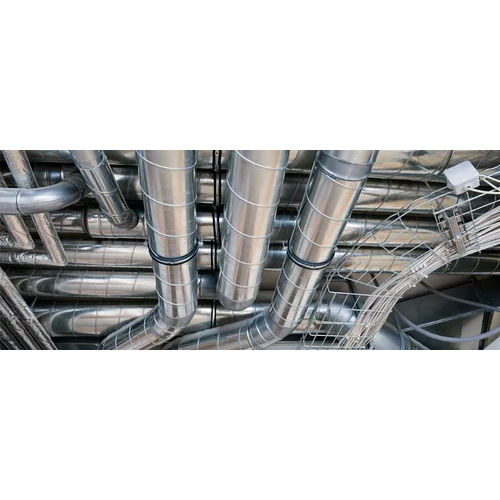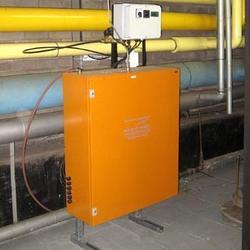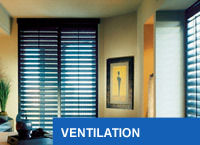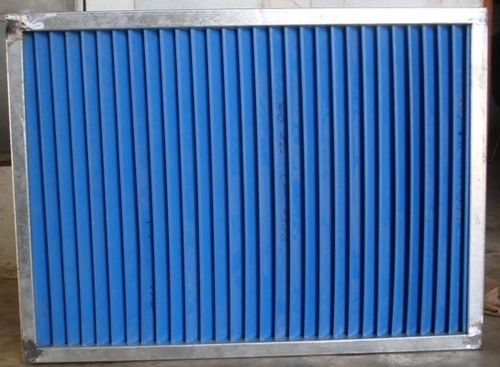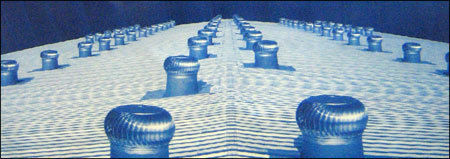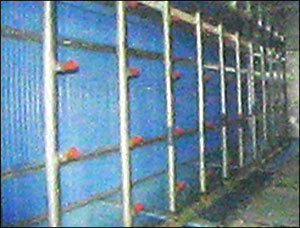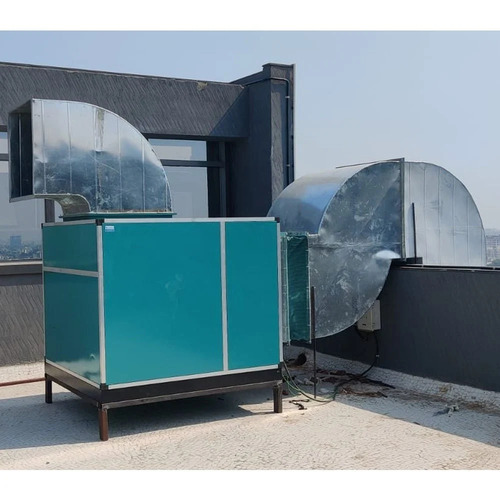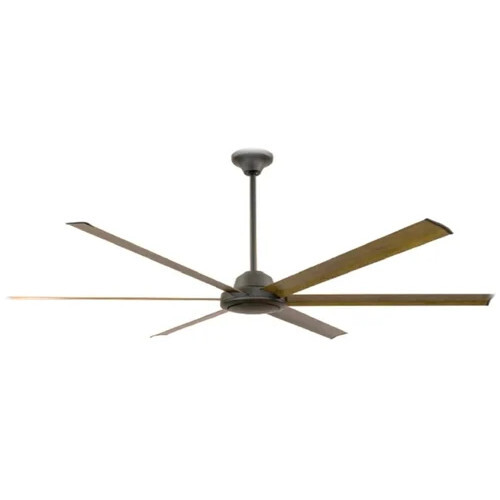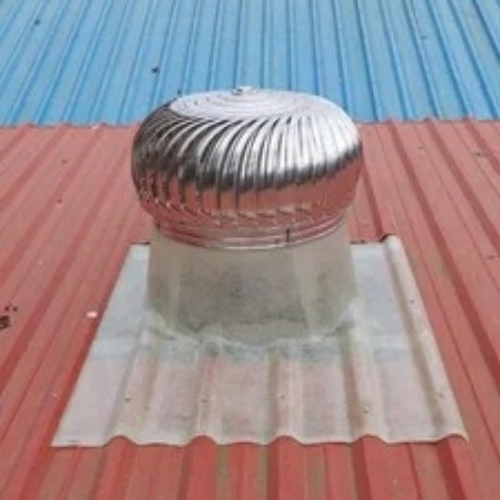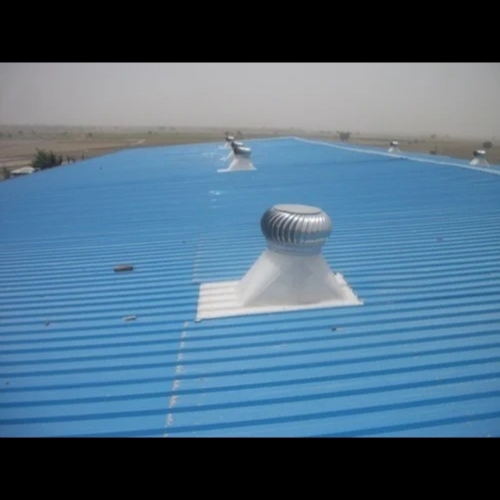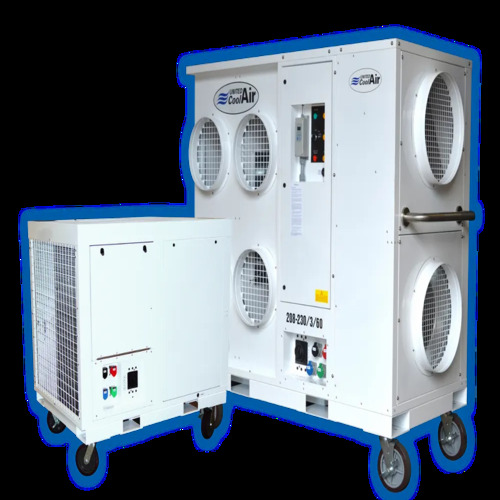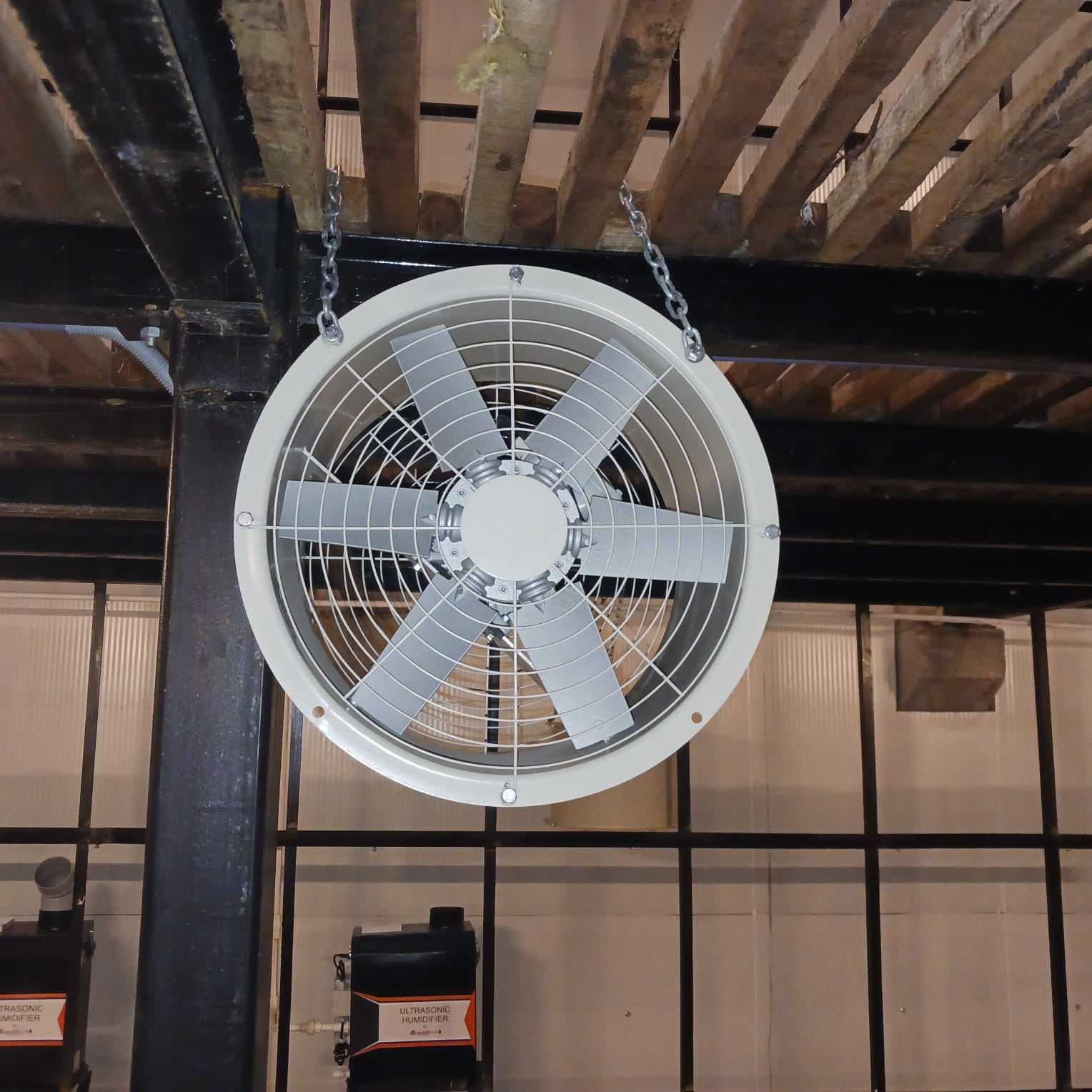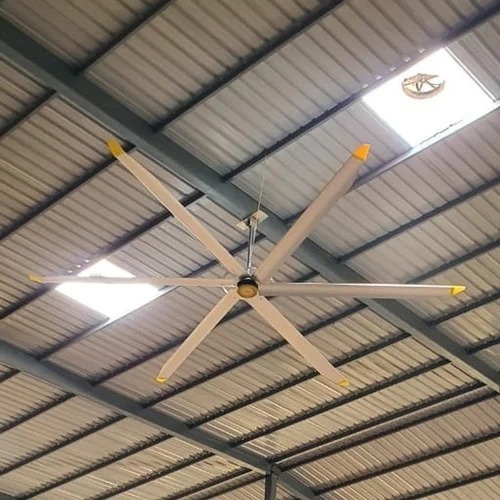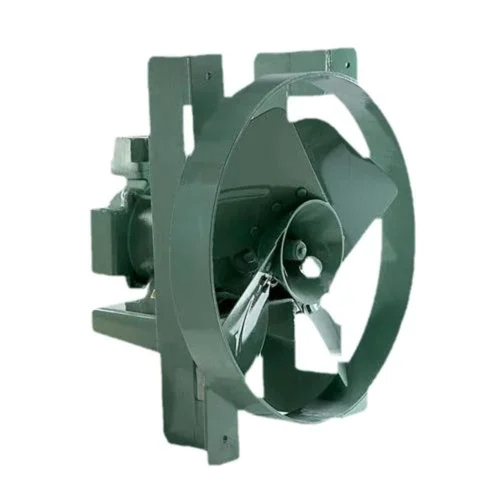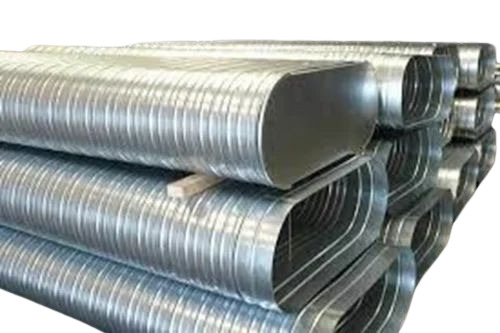Humidification & Ventilation Equipment
(4089 products)Car Parking Fan - Blade Diameter: 600 Millimeter (Mm)
Price: 65000.00 INR/Unit
MOQ1 Pack/Packs
ColorCustomer to specify colour
Blade MaterialAluminum Alloy
TypeVentilation Fan
Installation TypeOther
Power3Hp Volt (v)
Power SourceElectrical
PEB Louvers for Humidifications
Payment TermsOthers, Cash Against Delivery (CAD), Cheque
Sample AvailableYes
Sample PolicyContact us for information regarding our sample policy
Metasteel Prefab Private Limited
Gandhinagar
Gray Wind Driven Air Ventilators
Price: 3500 INR/Unit
MOQ3 Unit/Units
ColorGray,Silver
UsageIndustrial
Product TypeWind Driven Air Ventilators
MaterialStainless Steel, Other
TypeIndustrial
Voltage220-240 Volt (v)
Honeywell Three Way Motorized Globe Valve Length: 38 Millimeter (Mm)
Price: 132000 INR/Piece
MOQ1 Piece/Pieces
Size100-150 MM
Length38 Millimeter (mm)
MaterialOther, Cast Iron
TypeIndustrial
Blue Turbine Roof Ventilator
Price: 8000 INR/Unit
MOQ10 Piece/Pieces
ColorBlue
UsageRestaurant, Factory, Warehouses
FunctionHumidification
Golden Engineering Co. Pvt. Ltd.
Vadodara
Golden Frp Baseplate
Price Trend: 1200.00 - 3000.00 INR/Piece
MOQ100 Piece/Pieces
Product TypeFrp Plate
UsageConstruction
ColorGolden
MaterialOther, FRP
Turbo Ventilator Fans - Premium Wind Energy Powered Design | Noiseless Operation, Leak Proof, Frictionless Motion
Product DescriptionTurbo Ventilator Fans We are engaged in offering the Turbo or Wind Air Ventilator of premium quality that works only on wind energy. This system works noiselessly and is completely leak proof and has gained appreciation for these features. The Ventilator's mo
Piping and Ducting System
Product DescriptionBeing a customer centric organization, we are involved in manufacturing, exporting and supplying a supreme quality range of Piping and Ducting System in Mumbai, Maharashtra, India. These systems are manufactured by utilizing supreme quality raw materials and innovative technology. These are extremel
Sensor Proof High Pressure Misting Size: Different Available
Price: 850000 INR/Unit
MOQ1 Unit/Units
Product TypeHigh Pressure Misting
SizeDifferent Available
TypeCommercial
Voltage220-240 Volt (v)
UsageFactory, Warehouses, Cleanroom
Amtm Mistjet Private Limited
Jamshedpur
Turbo Air Ventilator - Height: 380 Millimeter (Mm)
Price: 5000 INR/Set
MOQ1000 Set/Sets
Product TypeTurbo Air Ventilator
UsageAir Ventilation
Height380 Millimeter (mm)
MaterialSheet Metal
TypeIndustrial
FunctionVentilation
Church Electric Hvls Fan - Color: Brown
Price: 180000 INR/Unit
MOQ1 Unit/Units
Size12, 24 feet
ColorBrown
UsageChurch
Product TypeHVLS Fan
MaterialOther, MS and Aluminum
Voltage220-240 Volt (v)
Varni Engineering
Surat
 Trusted Seller
Trusted Seller5 Years
Sliver Exhaust Hood
Price Trend: 10000.00 - 100000.00 INR/Piece
MOQ1 Piece/Pieces
UsageKitchen Area
Product TypeExhaust Hood
ColorSliver
MaterialAluminum
Kanteen India Equipments Co.
Kolkata
Stainless Steel Roof Air Ventilator
Price: 3000 INR/Set
MOQ100 Number
Supply Ability100 Per Day
Delivery Time7 Days
Main Domestic MarketAll India
Silver Commercial Building Prefabricated Duct
MOQ1 Square Foot/Square Foots
SizeStandard
ColorSilver
Product TypePre Fabricated Duct
UsageIndustrial & Commercial
MaterialSheet Metal
Installation TypeWall Mount
Shri Jai Shakti Corporation
Ahmedabad
Industrial Air Ventilation System - Color: As Per Customer
Price Trend: 450000.00 - 3400000.00 INR/Set
MOQ1 Set/Sets
UsageIndustrial Ventilation & Exhaust Systems
Product TypeTube Axial Inline Fan
ColorAS PER CUSTOMER
SizeCustomer to specify
MaterialOther
TypeIndustrial
Aluminium Duct - Color: Silver
Price: 700 INR/Piece
MOQ1 Piece/Pieces
ColorSilver
UsageIndustrial
Product TypeAluminum Duct
Length25 Foot (ft)
MaterialAluminum
TypeCommercial
Industrial Evaporative Cooling System - Color: Silver
Price: 150000 INR/Unit
MOQ1 Unit/Units
UsageIndustrial
Product TypeEvaporative Air Cooler
ColorSilver
MaterialAluminum
TypeIndustrial
Voltage220-440 Volt (v)
Aircare System And Solution India Private Limited
Pune
Industrial Air Louver - Corrosion-Resistant Aluminum, Various Sizes Available, Silver Finish | Optimized Airflow, Durable Design, Manual or Automatic Operation
Price: 32500 INR/Unit
MOQ10 Unit/Units
ColorSilver
Product TypeAir Louver
SizeDifferent Sizes Available
UsageIndustrial
MaterialAluminum
Installation TypePortable
DataCenter Air Purification System (DAP)
Price Trend: 300000.00 - 600000.00 INR/Piece
MOQ1 , Piece/Pieces
Payment TermsOthers, Cheque
Main Domestic MarketAll India
Kitchen Fume Exhaust System - Automation Grade: Automatic
Price: 30000 INR/Piece
MOQ1 Piece/Pieces
Product TypeKitchen Fume Exhaust System
Power SourceElectric
Frequency50 Hertz (HZ)
Surface FinishPolished
ColorSilver Blue
Automation GradeAutomatic
Desiccant Wheel Spares - Color: Grey
MOQ100 Unit/Units
UsageIndustrial
ColorGrey
Product TypeDesiccant Wheel
ShapeRound
MaterialSheet Metal
Voltage220V/380V Volt (v)
Rehoboth Enviro Systems Pvt Ltd
Palghar
Humidification System 2, Operating Temperature: 50 Degree C
Product DescriptionHumidification System
Filtotech Air Control System Private Limited
Kolkata
New Energy OBC Water Cooling Aging System
UsageFor Industrial
Product TypeCooling Aging System
MaterialAluminum
TypeCommercial
HVAC Duct System
Price: 500000 INR/Piece
MOQ10 Piece/Pieces
Supply Ability100 Per Day
Delivery Time1-8 Days
Ec Centrifugal Blowers Retrofit - Application: Industrial
Price: 119000 INR/Piece
MOQ1 Piece/Pieces
ColorSilver
ShapeRound
UsageIndustrial
Size560 mm
Power SourceElectric
Surface FinishPlain
Volume Control Damper G.I And M.S
Price Trend: 1000.00 - 10000.00 INR/Square Meter
MOQ1 Square Meter/Square Meters
Mounting TypeFixed in ducts
Surface FinishGalvanized surface
ApplicationVentilation Systems
Power SourceMechanical or Electrical (optional)
FeaturesAdjustable blade damper for airflow regulation
ShapeRectangular and Circular
Industrial Axial Flow Fans
Price: 4000 USD ($)/Piece
MOQ100 Piece/Pieces
Supply Ability3 Per Year
Delivery Time3 Months
Ss Hvac Duct System - Color: Silver
Price: 25000 INR/Unit
MOQ1 Unit/Units
Product TypeSS HVAC Duct System
UsagePoliticontol Labs, Residential, Pharma Industry, Teen Room
ColorSilver
MaterialSheet Metal
Voltage220 Volt (v)
Latest From Humidification & Ventilation Equipment
Misting System
By:
Humi Air Systems Pvt. Ltd.
Ventilation Products
By:
Karshni Aluminium Co. (p) Ltd.
Powder Coated Roof Top Air Ventilators
By:
Indo-tech Engineers
Over Head Air Foil
By:
Scientico Instruments
Wind Operated Ventilator
By:
Rainbow Super Polymers
Water Eliminators
By:
Revlon Industries
Roof Turbine Ventilators
By:
Twinpro Trading Company
Ecocool Turbine Ventilator
By:
Hma Automation Systems India Pvt. Ltd.
Single/Double Spray-Type Unit
By:
Roots Cooling Systems Pvt. Ltd.
Jet Diffuser
By:
Airmaster Flowtech (p) Limited
Ready To Ship Humidification & Ventilation Equipment
Humidification & Ventilation Equipment: Uses & Types
Introduction
A humidifier is a piece of machinery that raises the relative humidity of an area to a comfortable level for its occupants by adding water vapor into the air. This is a common occurrence in the winter, when using the heater to dry out the indoor air.
A mechanical framework of interconnected devices, a ventilation system regulates air circulation in enclosed places like buildings. Its primary goal is to bring in a steady stream of clean air from outside while exhausting stale air.
To function, active humidification and ventilation equipment allow air to flow through a reservoir of warm water. Proximal to the ventilator, in the inspiratory limb of the circuit, are the devices in question. Once the air has been humidified in the reservoir, it is sent along the inspiratory limb to the patient's airway.
When it comes to humidifying gases, heat and moisture exchangers are often referred to as "artificial noses" since they function similarly to the human nasal cavity. Both work on the same basic principle and have a condenser that recycles the moisture from your exhaled breath into your incoming one.
Uses of Humidification & Ventilation Equipment
1. Uses in keeping the skin and hair moist
Adding moisture to the air can help cut down on snoring as well. Dry air might make snoring worse since it is less likely to adequately lubricate the airways. It has been suggested that running humidification and ventilation equipment at night can help alleviate some of the symptoms.
2. Uses in snoring
Winter can cause skin, lips, and hair to become dry and brittle for some people. Dry, itchy, or flaky skin is a common complaint among people who use any of a variety of heating systems that circulate hot, dry air around a building. The skin might also become dry from exposure to cold weather outside. Dry, cracked skin may be prevented with the use of humidification and ventilation equipment, which adds moisture to the air inside a building.
3. Uses in cough production
A dry, unproductive cough is a common symptom of breathing dry air. Increasing the humidity in a room can help bring more moisture into the airways, resulting in a more effective cough. Phlegm that has been stuck or accumulated in the lungs can be expelled with a good, healthy, vigorous cough.
4. Preventing influenza
One reliable source said that using humidification and ventilation equipment could lessen the likelihood of contracting influenza. Using a cough simulator to release the influenza virus into the air, scientists discovered that humidity levels above 40% quickly destroyed virus particles, rendering them considerably less likely to be infectious.
Types of Humidification & Ventilation Equipment
1. Ultrasonic Humidifier Equipment
Vibrating metal or ceramic diaphragms are used to disperse moisture into the air in these humidifiers. Water droplets are formed as a result of the vibrations and are subsequently released into the surrounding area. Most ultrasonic humidifiers provide you with the alternative of a warm or cold mist.
2. Vaporizer humidifiers
The mist from these humidifiers can be either warm or cool. Inhalants are a helpful adjunct treatment for people experiencing cold and flu symptoms. Vaporizer humidifiers are reasonably priced despite their adaptability. Most vaporizers, when turned to the warm setting, release visible steam into the air, while turning to the cool setting, release a mist. Vaporizers are low-noise and low-dust devices.
3. Evaporative Humidifiers
Because they don't require heat to turn water into vapor, evaporative humidifiers are quite similar to cool mist humidifiers. In its place, a moist wick filter at the device's base circulates the damp air. Humidity in the air is produced when this water evaporates into a vapor and is discharged as a spray or mist. Because they produce no heat, this Humidification & Ventilation Equipment is safe for use in homes with children and pets. They won't damage your floors or furnishings if you set them down anywhere.
4. Warm Mist Humidifiers
In colder climates, warm mist humidifiers provide the finest results. Most humidifiers work by passing a current through a water tank, which then boils and evaporates as a mist. After the vapor has been cooled, it is discharged into the atmosphere. When something is heated, the possibility of bacterial contamination is reduced, and the purity level rises.
5. Cool Mist Humidifiers
Humidifiers of this type release a refreshing mist of vapor into the air. When the water leaves the humidifier, it has been filtered to remove any debris or bacteria that may have been floating in it. Humidifiers that use a cool mist are also inexpensive and simple to maintain.
6. Smoke Ventilation
In the case of a fire, smoke ventilation systems must be installed in all public buildings. Doing so aids in the elimination of heavy, concentrated smoke, the leading cause of death during a fire, and clears the way for trapped residents to escape.
7. Balanced Ventilation
More moderate designs, which do not pressurize or depressurize the building, might mitigate the possible drawbacks of exhaust and supply ventilation. Instead, at least two fans and two duct systems are strategically placed throughout the space to infuse and exhaust the same volume of air.
8. Supply Ventilator
In contrast, supply ventilation raises the internal air pressure and draws outside air in through vents and fans. The remaining air will then leave the structure through any gaps, openings, or vents.
9. Exhaust Ventilators
Buildings with exhaust ventilation systems have their interior air pressure lowered below that of the exterior. The exhaust system draws the stale air outdoors via a ducting network. In its stead comes a breath of fresh air from somewhere else, typically a vent.
Recommendations for buying Humidification & Ventilation Equipment
1. Requirement
Identifying your needs is the first step in purchasing air washer equipment, as this will determine the model you ultimately settle on. Evaporative humidification and ventilation equipment are ideal for larger spaces since they circulate the humidified air using internal fans to reach almost every part of the room. Conversely, impeller humidifiers don't require a fan and are quieter, making them more suited to apartments or other tiny places.
And since impeller air washers don't have a fan, they're not much quieter than the evaporative models.
Because of the high cost of conventional compressor-based air conditioning systems, wet ventilation is ideally suited for use in commercial and industrial settings.
Therefore, it is recommended to install SYMBIOSIS Air Washers, which are both quick and simple to install, on the outside of the building, either on the roof, the side walls, or the ground.
2. Energy-efficiency
It is important to check the air washer's power usage and make comparisons to other types of air washer equipment before purchasing it, even though air washers are generally thought to be an energy-efficient form of cooling.
An Evaporative Cooling Type Air Washer, for instance, uses roughly 25% less energy than a standard spray-type machine.
The low operating cost translates to a significant reduction in monthly electricity bills—roughly one-eighth the cost of central air conditioning for the same space.
4. Size
Humidifiers that use an air washer typically come in small, tabletop designs that can only be used to treat a single room at a time. While most humidification and ventilation equipment can treat rooms up to 1,000 square feet in area, some models can treat larger spaces and others can release more or less moisture daily.
Check the specs of various kinds of air washers to get the required square foot coverage area, and then measure the area to be cleaned.
If you want the best results from humidifying and air cleansing, you should get a unit that's a little bigger than you need.
5. Cost and Future Maintenance
Is the price reasonable? is a very crucial question to ask. Extremely cost-effective, typically requiring only a third as much initial investment as conventional air conditioning for the same space. Unlike traditional air conditioners, which recalculate the same stale air, this one uses only clean, filtered air. It is important to consider how often repairs will need to be made when deciding on an air washer type.
The cost of ownership rises with filter-based air washers since the filters must be replaced on a regular basis.
However, as dust and debris settle at the bottom of an Impeller air washer, it requires more regular cleaning than a filter-based device.
6. Add-on Features
Look at each model's feature set and decide which ones are must-haves before purchasing an air washer. High efficiency, several fan speeds, an adjustable humidistat, a low-water indicator with auto-shutoff, digital controls, a fragrance container, and a filter change indicator are just some of the convenient extras available.
FAQs: Humidification & Ventilation Equipment
Q.What is the most important humidification & ventilation equipment?
Ans. Heat and moisture exchangers (HMEs) are the most important humidification and ventilation equipment.
Q. When should humidification equipment be used?
Ans. Humidification may be helpful for those who need high-flow oxygen for longer than 24 hours, who complain of dryness or discomfort in their upper airways, or who have trouble with sputum retention.
Q. What are the five types of ventilation equipment?
Ans. Smoke Ventilation, Supply Ventilation, Exhaust Ventilation, Balanced ventilation, and Mechanized Fans are the five types of ventilation equipment.
Q. What is the cost of humidification equipment?
Ans. The cost of humidification equipment is between Rs 10,000- 1, and 50,000 in India.
Manufacturers & Suppliers of Humidification & Ventilation Equipment
Company Name | Member Since |
|---|---|
Dipesh Engineering Works Mumbai, India | 23 Years |
Fanair India Private Limited Alwar, India | 21 Years |
Golden Engineering Co. Pvt. Ltd. Vadodara, India | 20 Years |
Everest Composites Pvt. Ltd. Vadodara, India | 18 Years |
Rohan Engineering Enterprise Howrah, India | 18 Years |
Kanteen India Equipments Co. Kolkata, India | 17 Years |
United Air Tech Industries Mumbai, India | 17 Years |
Bry-Air (Asia) Pvt. Ltd. Gurugram, India | 16 Years |
Futuristic Technologies Ahmedabad, India | 15 Years |
Laxmi Udyog Mumbai, India | 14 Years |
Popular Products


